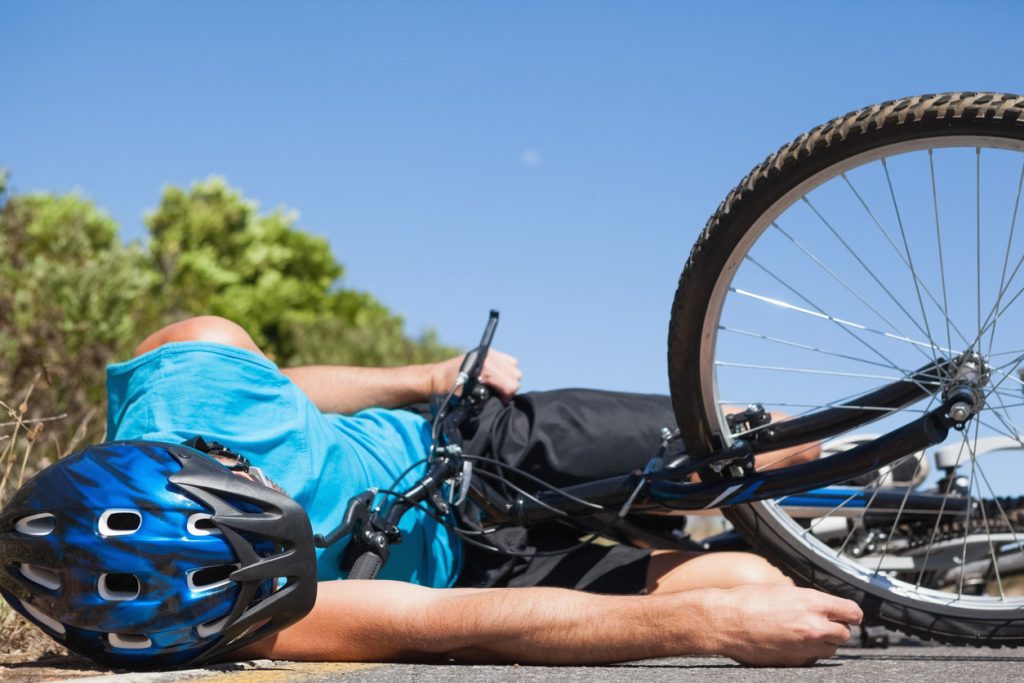Bicycling is a great way to get a cardio workout, a convenient means of transportation, and a hobby that draws many enthusiasts. Unfortunately, it can be dangerous to share the road with much larger and faster motor vehicles, and thousands are injured in bicycle accidents every year.
If you enjoy cycling, it is essential to know the risks you face on the road and be informed of the best practices to avoid accidents. Consider the following measures you can take to avoid being injured while out on your bike.
Watch Your Speed When You’re Out on the Road
One of the simplest steps you can take while riding your bike is to be aware of your speed and travel at a rate at which you are comfortable. Other considerations to make regarding your speed include the road surface you are riding on, the unique traffic conditions at the time, and the weather conditions. When you factor these conditions into the speed at which you ride, you reduce the risk of accidents and make the roads safer for yourself and those around you.
Be Sure to Keep Your Hands on the Handlebars
No matter how comfortable you feel on your bike, nor how much experience you have, it is important to avoid the temptation to ride with one hand (or no hands) on the handlebars. You should never hold a drink or use your cell phone while you are riding, as you need both hands to operate your bicycle safely, and you should never take any risks just to show off your riding prowess.
There are many risks involved with riding your bike without both hands on the handlebars. You never know when you may encounter uneven pavement or other hazards such as potholes in the road. When you hit these types of obstacles, it can even be difficult to maintain control of your bike even with both hands on the bars, so neglecting this safety measure can prove to be disastrous. If you need to use your phone or access your water bottle, it is always best to stop and take a quick break.
Leave the Headphones in Your Backpack
Listening to music through your earbuds or headphones while you ride can be very tempting. It may make your commute seem faster, help keep you pumped for your cycling workout, or make your relaxing ride in the country seem more enjoyable. This, however, is a dangerous trap to fall into.
It is vital to be completely aware of your surroundings whenever you are on the road, and this means you need to hear what is going on around you. Being able to hear clearly helps to alert you to potential hazards, including oncoming first-responder sirens, people yelling, vehicle horns, oncoming cars, and even other bikes.
Bicyclists are much more vulnerable to injury and death than individuals in vehicles when they are on the road, so it is essential to have full use of all your senses, even if you are on quiet backroads with little traffic. You never know when a vehicle coming from behind or from the side at an intersection may pose a threat to your safety.
Protect Yourself By Wearing Your Helmet
Whether the laws in your state require you to wear a helmet or not, it is one of the best ways to protect yourself in the event of a biking accident. Not only can wearing a helmet protect your head, but it can also reduce the risk of injuries to your neck and face. If you have had an accident in which your helmet sustained any damage, be sure to purchase a new one. Helmets are actually made to crack upon impact to protect your head; once they have been cracked, they can no longer protect you effectively.
Purchase and Use Headlights
If your bicycle doesn’t have a headlight, you should buy one and install it at once. Just as they do on motor vehicles, headlights help you to see as well as to be seen when conditions are dark or foggy. Daytime running lights are another option you may consider as an additional safety measure to protect you when you are on your bike.
Check Your Brakes Every Time
You always want to double-check your brakes and make sure they are functioning properly before you head out on the road. Check to be sure that the brake pads are making contact with the disc rotor on your wheels so that you can stop with no trouble. If something is not right with your brakes, be sure to fix it before entering any roadways. The easiest way to check both your front and back brakes is to spin the wheel with your hand and then apply the brake.
Be Sure That Your Bike Is the Right Size for You
This may seem like common sense, but the fact is many individuals buy a bike that isn’t suited for their body. When the bike you are riding is too big or too small, you cannot effectively control it and handle it properly on the road.
Bicycle manufacturers provide sizing charts that you can use when selecting your bike. The sizing is typically based on the rider’s height. The chart will clarify the best bike size for you and make your ride safer right from the start.
If you aren’t sure whether your current bike is the right size or not, there are a few ways to get an idea. You can always check with the professionals at your favorite bike shop, or you can try this simple test. Stand over your bike with your feet placed flatly on the ground. You should have around two inches of space between your groin and the bike seat—any more or any less could indicate that your bike is a bad fit for you.
In the Unfortunate Event of an Accident, Get the Help You Need
If you happen to have a bicycle accident, be sure to seek medical attention right away. Even if you feel fine, you may have internal injuries, so you should be evaluated by a medical professional. If your accident was the result of a driver’s negligence, reach out to the legal team at Guenard & Bozarth, LLP, for help. We have the experience and knowledge to help you get the compensation you deserve. Visit our website to learn more about what we can do for you.


